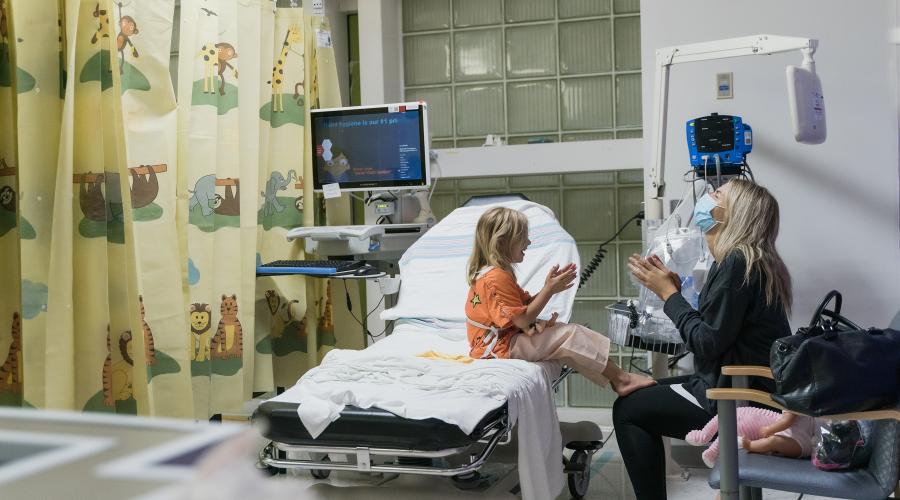
How Urine Testing Choices May Increase Antibiotic Overuse
Antibiotic overuse remains a pressing challenge in children's health, often rooted in the difficulty of accurately diagnosing common childhood infections such as urinary tract infections (UTIs). In many cases, children are exposed to antibiotics they don’t need—along with the associated risks of side effects and increasing antibiotic resistance.
Now, new research led by the UCSF Department of Pediatrics, published in The Journal of Pediatrics, is prompting a critical shift in thinking: What if, in addition to refining treatment after test results come back, we could improve care by rethinking whether to send diagnostic tests in the first place?
Focusing on the First Step: The Decision to Test
The study analyzed millions of pediatric ambulatory visits nationwide using data from the National Center for Health Statistics. Nearly 40% of all urine tests were performed during visits for viral symptoms, such as cough, congestion, or diarrhea, when the child had no urinary symptoms. Previous studies have shown that children with these symptoms have a low probability of having a UTI. This is especially true for children older than 2 years.
“This work is part of efforts to improve healthcare practices and outcomes for children who undergo UTI diagnostic evaluation,” explained lead author Rachel Wattier, MD, MHS, Associate Professor of Pediatrics in the Division of Infectious Diseases and Global Health at UCSF. “Our findings suggest we should focus attention on the first decision—whether to do a urine test at all.”
That insight has major implications for pediatric care nationwide. In ambulatory settings, potentially unnecessary urine testing can produce false-positive results and is associated with longer visit times. Reducing these tests where clinically appropriate could not only help limit unnecessary antibiotic exposure, but may also save time, reduce staff workload, and lower healthcare costs across the system.
The Testing Paradox: Why Older Kids Get Tested More

In emergency departments, urine testing at visits for viral symptoms was most common in older children and adolescents (ages 6-17), even though their risk of UTI is relatively low. Infants and toddlers with viral symptoms were tested least often despite having a higher baseline risk for UTI.
Why this mismatch? "We do not know for sure, but we believe one factor is feasibility," said Wattier. Collecting urine from infants often requires bladder catheterization or waiting for a bagged sample, procedures that, while safe, can be technically challenging or raise concerns for clinicians and parents.
"Older children are more likely to be successful when asked to collect a urine sample. So paradoxically, they may end up having more testing even if they don't have an especially high risk of UTI," explained Wattier. Other contributing factors could include triage protocols that trigger urine testing for various screening reasons.
National Impact: A Call to Reevaluate Pediatric Testing Protocols
The implications of this study extend far beyond UCSF. It calls on healthcare providers and systems nationwide to revisit how diagnostic decisions are made.
More than 70 million pediatric ambulatory visits for acute illnesses occur in the U.S. each year, and this research shows that a sizable portion of urine tests may be avoidable. Optimizing test practices, particularly in high-volume settings like emergency departments, could have a major impact on antibiotic stewardship and pediatric care quality nationwide.
"The goal should be to still do urine tests in children who are most likely to benefit, such as young infants with fever who have no other obvious reason," Wattier noted.
What’s Next: Listening to Clinicians and Families
Improving testing practices will require further exploration with different sources of data. Wattier and her team are launching a follow-up study to explore the specific drivers of urine testing decisions through interviews with clinicians, caregivers, and frontline staff.
“We’re working with UCSF-affiliated emergency departments, urgent care sites, and parent partners to better understand what influences testing decisions,” said Wattier. “Ultimately, we aim to optimize care for both groups: children who truly need antibiotics for a UTI, and those who don’t.”
Authors: Other authors of the study include Suni Kaiser, MD, MS, of the UCSF Department of Pediatrics; Daniel Shapiro, MD, MPH, and Hillary Copp, MD, MS, of UCSF; and Adam Hersh, MD, PhD, of the University of Utah.
Funding: Dr. Wattier’s research is supported by the National Institute for Diabetes, Digestive and Kidney Diseases through the UCSF-KPNC Urologic Epidemiology K12 career development program.
